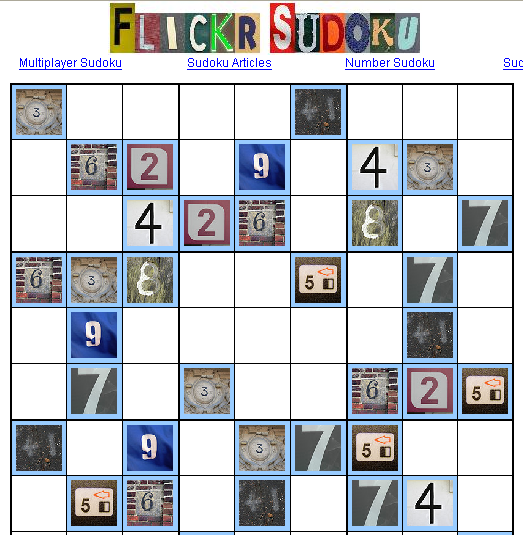I’ve always been a visual learner (wow, I snuck some educational theory in there on you), so it was with a pleasant little smile that I discovered Flickr Sudoku the other day. I’ve played Sudoku, the Japanese number logic game, off and on for the past few years, and enjoy the good logical puzzle it presents (I also happen to be a logical learner, go figure). Given a small amount of “given” numbers, a person is expected to fill in the remaining blanks with the numbers 1 through 9, without any repeats. I won’t go into further detail on how to play, since there are many sites that could explain it with greater detail and clarity. However, I will share the amazingly addictive Flickr Sudoku, the website that uses images from Flickr for the numbers used in the game.
I wrote about a web Sudoku site just a little more than a year ago, and briefly mentioned it’s ability to get learners thinking logically and try to identify patterns while solving the puzzles. With the addition of real life images, the game brings a new level of engagement, as I often found myself pondering where exactly the numbers came from. Some of the origins of the images are easy to identify; numbers from sign posts or mailboxes, but others are quite mysterious. From chalk-drawn numbers to typewriter keys, there’s enough to keep those students that might get easily frustrated or discouraged with logic puzzles to take a moment to relax. It might even inspire some of the more visual learners to start cutting up magazines and/or newspapers to arrange their own little mash-up version of Sudoku or other number game. Whatever the end result, it’s nice to see that technology once again gives even simple games and puzzles new way to visualize problems and learning tools.


 RSS - Posts
RSS - Posts